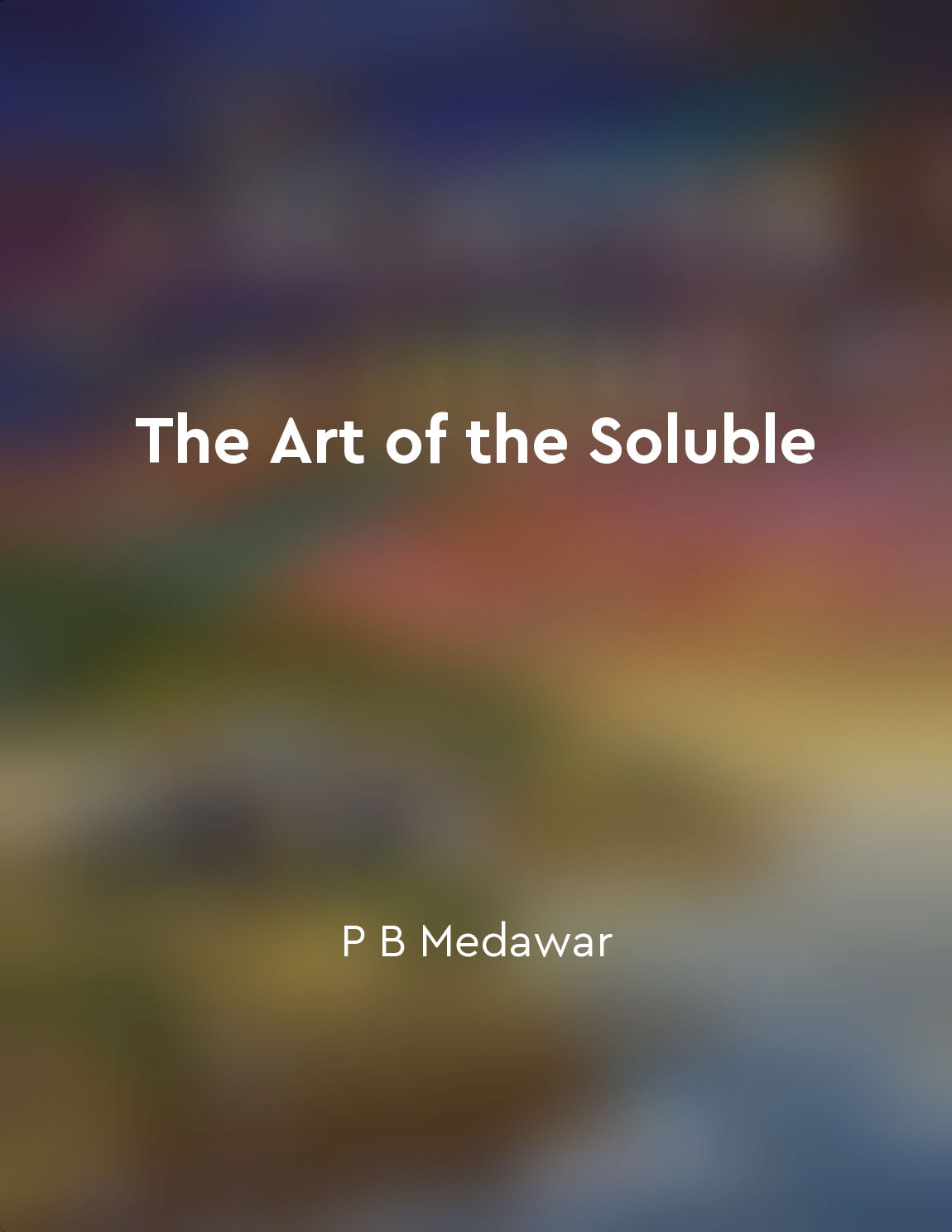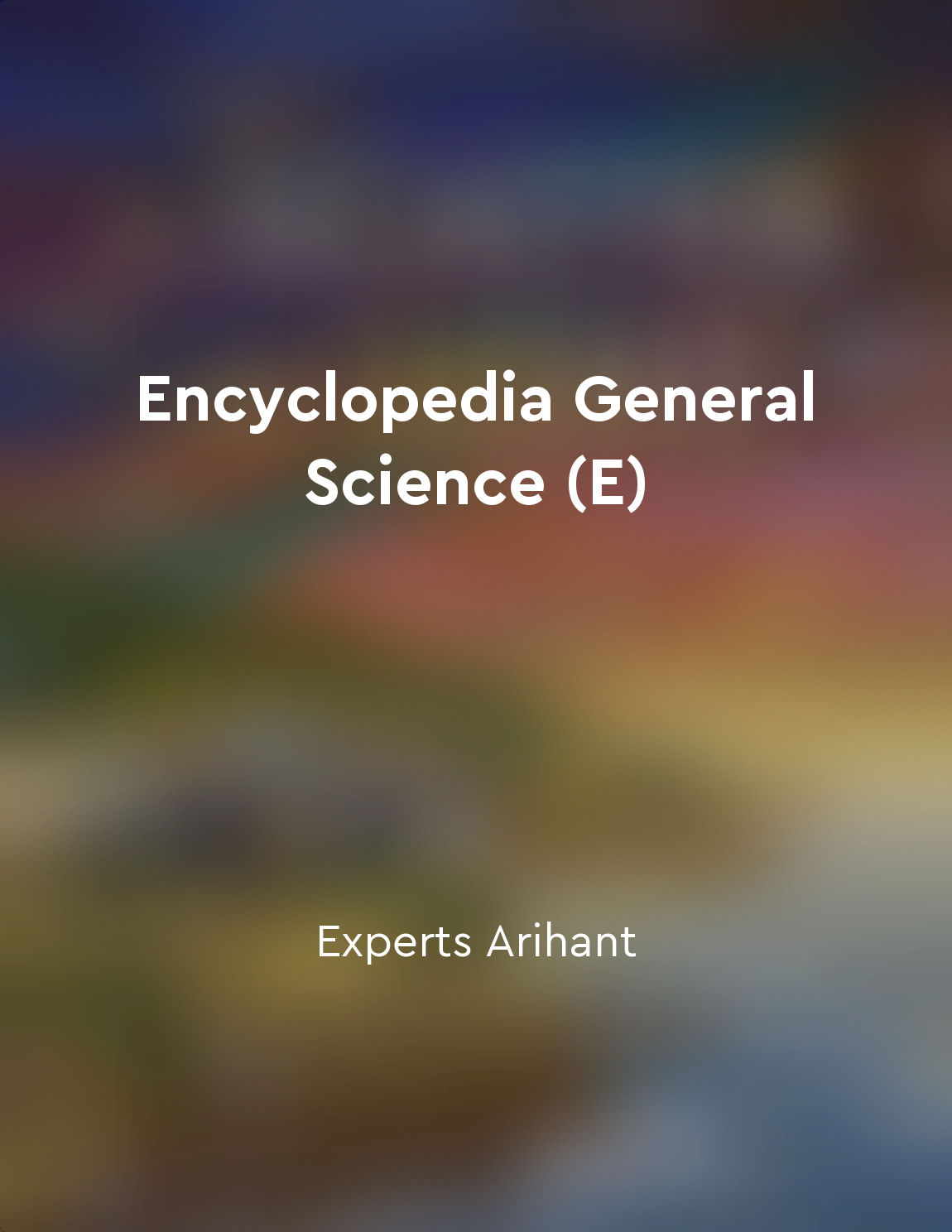Normal science operates within paradigms from "summary" of The Structure of Scientific Revolutions by Thomas S. Kuhn
In scientific research, the activities of the scientific community are guided by a shared set of assumptions and beliefs known as paradigms. These paradigms serve as the foundation for normal science, shaping the questions asked, the experiments conducted, and the conclusions drawn. Scientists working within a paradigm are united by a common worldview, a set of fundamental principles that define the boundaries of legitimate scientific inquiry. Normal science operates within the confines of these paradigms, seeking to refine and expand upon existing knowledge rather than challenge the underlying assumptions themselves. Researchers within a paradigm work to solve puzzles and anomalies that arise within the framework established by the prevailing paradigm. They do not question the overarching principles that govern their research but instead seek to better understand and explain the phenomena they observe. The stability provided by paradigms is essential for the progress of science, allowing researchers to build upon the work of their predecessors and make incremental advances in knowledge. Without a shared set of assumptions and beliefs, scientific inquiry would devolve into chaos, with researchers working at cross-purposes and unable to communicate or collaborate effectively. While paradigms provide a necessary structure for scientific research, they can also limit the scope of inquiry and prevent researchers from considering alternative explanations or approaches. In some cases, paradigms can become so entrenched that they stifle innovation and hinder the development of new ideas. It is only when a paradigm reaches a crisis point, when anomalies and contradictions accumulate to the point where they can no longer be ignored, that a scientific revolution can occur. During periods of revolution, scientists are forced to reexamine the fundamental assumptions of their field and consider new ways of approaching old problems. The shift from one paradigm to another is not a gradual process but a sudden and disruptive change that fundamentally alters the way scientists understand the world. The emergence of a new paradigm opens up new avenues of research and allows for the exploration of ideas that were previously unthinkable within the confines of the old paradigm. In this way, the concept of normal science operating within paradigms highlights the dynamic and ever-evolving nature of scientific inquiry. While paradigms provide a necessary structure for the advancement of knowledge, they must also be open to change and revision in response to new evidence and insights. Only by questioning and challenging existing paradigms can scientists continue to push the boundaries of knowledge and drive progress in their fields.Similar Posts
Change is inevitable and necessary for growth
The idea that change is both unavoidable and crucial for advancement is a fundamental truth of life. In our ever-evolving world...

A good scientist is humble and openminded
In the pursuit of scientific truth, humility and open-mindedness are essential qualities for any researcher. A good scientist m...

Anatomy focuses on the structure of living organisms
Anatomy is a branch of science that is concerned with the study of the structure of living organisms. It delves into the intric...
Challenging conventional wisdom in science
Abraham Pais delves into the intricate world of science and the dynamic process of challenging established beliefs and theories...
Paradigms influence scientific methodology
In scientific research, paradigms serve as guiding frameworks that shape the methodology used to investigate and understand the...
Incommensurability between paradigms
The concept of incommensurability between paradigms is a central idea in understanding scientific revolutions. When scientists ...
Critical thinking skills are honed through analysis and evaluation
Critical thinking is a vital skill that is developed through the process of analysis and evaluation. When individuals engage in...
Science offers a way to understand the world
Science, with its rigorous methodology and reliance on evidence, provides a powerful framework for understanding the world arou...
